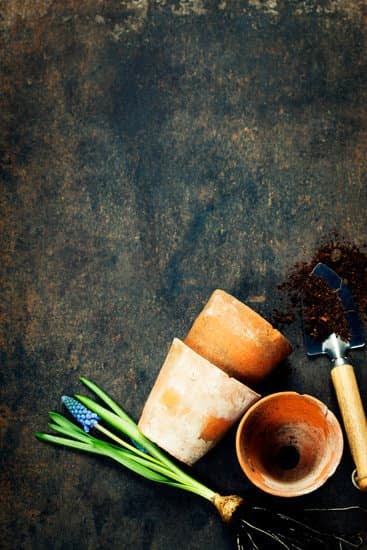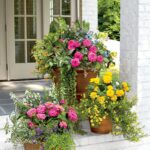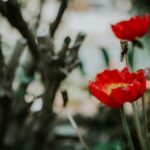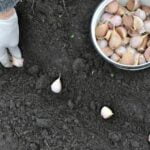Are you looking to create a beautiful and functional outdoor space? Whether you have a large backyard or a small urban balcony, garden design and layouts are essential in transforming your outdoor area into a tranquil oasis. From planning and selecting the right plants to incorporating hardscape elements and maximizing space, there are numerous factors to consider when designing your garden.
When it comes to garden design and layouts, thorough planning is key. Before jumping into the design process, it’s important to take into account the specific needs of your outdoor space, the layout of your property, and your personal style preferences. Taking the time to plan and envision your garden will ensure that you create a space that meets both your aesthetic desires and practical needs.
Choosing the right plants is another crucial aspect of garden design. The type of plants you select can impact the overall look and feel of your garden, as well as its functionality. Additionally, incorporating hardscape elements such as pathways, patios, and water features can add structure and visual interest to your garden layout.
In small spaces, maximizing every inch is essential, making functionality an important consideration in the design process. As you embark on the journey of creating a stunning garden, keep in mind that color and texture play vital roles in bringing your vision to life. Lastly, sustainability and eco-friendly practices are increasingly becoming part of modern garden designs, promoting harmony with nature while reducing environmental impact.
In this article series on Garden Design and Layouts, we will explore each of these aspects in detail to offer guidance for creating an outdoor haven that suits your lifestyle while enhancing the natural beauty of your surroundings. Whether you’re a seasoned gardener looking for new ideas or a novice embarking on their first gardening project, this series aims to provide valuable insights into creating stunning gardens through thoughtful design and practical tips for maintenance and care.
Importance of Planning Before Designing a Garden
The importance of planning before designing a garden cannot be overstated. Proper planning is essential to ensure that the garden layout will be both aesthetically pleasing and functional. A well-thought-out plan can help maximize the use of space, minimize maintenance, and create a cohesive design that suits the specific needs and preferences of the gardener.
One of the key reasons why planning is crucial is that it allows you to consider various factors, such as sunlight exposure, soil type, and drainage, before making any design decisions. By understanding these factors, you can choose the most suitable plants for your garden and place them in locations where they will thrive. This thoughtful approach can prevent costly mistakes and ensure a successful garden design.
Another important aspect of planning is creating a budget and timeline for your garden project. Establishing a budget will help you prioritize your spending and make informed choices about materials, plants, and hardscape elements. Additionally, having a timeline in place will allow you to schedule tasks effectively, ensuring that your garden design comes to life in a timely manner.
Lastly, planning before designing a garden also involves considering the long-term vision for your outdoor space. Whether you want to create an entertainment area, a peaceful retreat, or a vegetable garden, having clarity about how you want to use the space will guide the overall layout and design decisions. By thinking ahead and envisioning the end goal, you can avoid making impulsive choices that may not align with your ultimate vision.
| Planning Considerations | Benefits |
|---|---|
| Sunlight exposure, soil type, drainage | Choosing suitable plants; Preventing costly mistakes |
| Budget and timeline | Prioritize spending; Effective scheduling |
| Long-term vision for outdoor space | Guiding layout decisions; Avoiding impulsive choices |
Choosing the Right Plants for Your Garden Design
When it comes to designing your garden, choosing the right plants is crucial in ensuring the success and overall aesthetic of your outdoor space. The first step in selecting the right plants for your garden design is to consider the local climate and soil conditions.
Take note of the amount of sunlight and water your garden receives, as this will determine which types of plants will thrive in your specific environment. It’s also important to consider how much time you’re willing to devote to maintenance, as some plants require more care than others.
Once you have a good understanding of your garden’s environmental conditions, it’s time to think about the overall look and feel you want to achieve. Consider factors such as color, height, and texture when choosing plants for your garden design. For a cohesive and visually appealing garden layout, aim for a balance of different plant shapes and sizes. This can create depth and visual interest in your outdoor space while allowing each plant to stand out.
Additionally, think about the functional aspects of the plants you choose for your garden design. Do you want to attract wildlife such as birds and butterflies? If so, consider incorporating flowers that are known to attract these animals.
Are you looking to create a serene retreat? Consider using aromatic herbs or shrubs that will add fragrance to your garden. By carefully choosing plants that align with your vision for your outdoor space, you can create a truly personalized and beautiful garden design that reflects your unique style and preferences.
Incorporating Hardscape Elements Into Your Garden Layout
When designing your garden, it’s essential to consider the hardscape elements that will complement the natural greenery. Hardscaping refers to the non-living elements of a landscape, such as paths, walls, and patios. These features are crucial in adding structure and functionality to your garden layout.
One popular hardscape element to consider is the use of pathways. Pathways not only guide visitors through your garden but also create visual interest and define different areas within your outdoor space. They can be made from a variety of materials such as gravel, stone, or pavers, each offering a unique aesthetic appeal.
Another important hardscape element is the addition of retaining walls. These structures are not only visually appealing but also serve practical purposes such as preventing soil erosion and creating terraced spaces for planting. Retaining walls can be constructed from materials like stacked stone, concrete blocks, or timber, depending on the desired look and function.
It’s also worth considering adding a patio or seating area to your garden design. This allows you to create an outdoor living space where you can relax and entertain guests while enjoying your garden. Patios can be made from materials like natural stone, brick, or concrete pavers, providing a durable and visually pleasing surface for outdoor activities.
| Hardscape Element | Description |
|---|---|
| Pathways | Defines areas in garden; guides visitors; adds visual interest |
| Retaining Walls | Prevents soil erosion; creates terraced planting areas; visually appealing |
| Patios/Seating Areas | Creates outdoor living space for relaxation and entertainment; made from materials like natural stone or concrete pavers. |
Maximizing Space in Small Garden Designs
When it comes to small garden designs, maximizing space is crucial to ensure that every inch of your outdoor area is utilized effectively. With limited space, it’s important to plan and design your garden layout in a way that makes the most out of the available area.
Vertical Gardening
One effective way to maximize space in small garden designs is by incorporating vertical gardening techniques. Utilizing walls, trellises, and hanging planters can help you create a lush green space without taking up valuable ground area. You can grow a variety of plants such as herbs, flowers, and even vegetables vertically, adding depth and visual interest to your small garden.
Multi-Functional Furniture
Incorporating multi-functional furniture into your small garden design can help save space while also providing practical solutions for seating and storage. Look for outdoor furniture pieces that can double as storage units or have built-in planters. This not only saves space but also adds functionality to your garden layout.
Container Gardening
Utilizing containers for planting is an effective way to maximize space in small garden designs. Whether it’s traditional pots, hanging baskets, or repurposed containers, these are great options for growing plants in a confined area. You can mix and match different container sizes and heights to create an eye-catching display while making the most out of limited space.
By implementing these strategies and thoughtful planning, you can create a visually appealing and functional garden design even in a small outdoor space. Remember that with careful consideration of plant selection, layout design, and utilizing various techniques, you can transform your small garden into a beautiful outdoor retreat.
Creating Functionality in Your Garden Layout
Strategic Plant Placement
When designing your garden layout, it’s important to consider the functionality of the space. Strategic plant placement can help create different zones within your garden, such as a seating area, a play area for children, or a vegetable garden. By carefully placing plants and trees, you can create natural boundaries and privacy screens within your outdoor space.
Accessible Paths and Walkways
Incorporating accessible paths and walkways into your garden design is essential for creating functionality. Whether you’re looking to add a winding path for leisurely strolls or a direct route from one area of the garden to another, pathways should be well-planned and easily accessible. Consider using materials like gravel, pavers, or stepping stones to create visually appealing and functional walkways.
Multipurpose Features
To maximize functionality in your garden layout, consider incorporating multipurpose features such as raised beds that also serve as seating, or trellises that provide both support for climbing plants and privacy screening. By thinking creatively about how each element in your garden can serve multiple functions, you can make the most of the available space while adding practical elements to your design.
The Role of Color and Texture in Garden Design
When it comes to garden design, color and texture play a crucial role in creating a visually appealing and harmonious outdoor space. Choosing the right combination of colors and textures can elevate the overall look of your garden and create a sense of balance and unity. Incorporating diverse plant species with different hues and foliage textures can add depth and dimension to your garden design.
Color selection in garden design can evoke various emotions and set the mood for your outdoor space. Warm colors like red, orange, and yellow are vibrant and energetic, while cool colors like blue, purple, and green create a calming and soothing atmosphere. By carefully planning the placement of plants with different colors, you can create focal points and guide the flow of attention throughout your garden.
In addition to color, texture is another important element to consider in garden design. Varying leaf shapes, sizes, and surface textures can add visual interest and tactile appeal to your garden. Combining plants with smooth, glossy leaves alongside those with rough or fuzzy foliage can create an engaging sensory experience for anyone strolling through your garden.
Furthermore, incorporating hardscape elements such as stone pathways or wooden structures can also introduce texture into your garden design. By understanding the role of color and texture in garden design, you can create a dynamic landscape that is both visually captivating and inviting.
Sustainability and Eco-Friendly Practices in Garden Design
When it comes to creating a sustainable and eco-friendly garden design, there are several important practices to keep in mind. By implementing these strategies, you can reduce your environmental impact and create a beautiful, thriving garden that is in harmony with nature.
Some key elements of sustainability and eco-friendly practices in garden design include:
- Water Conservation: Incorporating water-wise plants, installing drip irrigation systems, and rainwater harvesting are all great ways to conserve water in your garden.
- Native Plants: Choosing native plant species can help support local wildlife and reduce the need for excessive watering, fertilization, and pest control.
- Composting: Utilizing compost as a natural fertilizer helps improve soil health, reduces waste, and minimizes the need for chemical fertilizers.
In addition to these practices, utilizing organic pest control methods, reducing lawn areas in favor of native plantings, and incorporating elements like permeable paving can all contribute to a more sustainable garden design. By taking these steps, you can create a beautiful outdoor space that is both environmentally friendly and visually appealing.
Maintenance and Care Tips for Your Garden Design and Layouts
In conclusion, maintaining and caring for your garden design and layout is crucial to ensuring its long-term success and beauty. By following a few simple tips and practices, you can keep your garden looking vibrant and healthy year-round.
Firstly, regular maintenance such as weeding, watering, and pruning is essential for the overall health of your plants. Be sure to remove any weeds that may compete with your plants for nutrients and water, as well as deadhead flowers to encourage new growth. Additionally, staying on top of watering needs will help prevent drought stress and keep your garden thriving.
Furthermore, it’s important to regularly inspect your garden for signs of pests or disease. Early detection and treatment can prevent the spread of any issues and help protect the overall health of your garden. Finally, stay informed about seasonal care requirements for your specific plant species, as different plants may have unique needs throughout the year. By staying attentive to maintenance and care, you can enjoy a beautiful and flourishing garden design for years to come.
Frequently Asked Questions
How Do I Plan My Garden Layout?
When planning your garden layout, start by considering the size and shape of your garden space, as well as the amount of sunlight it receives. Take into account the types of plants you want to grow and their specific needs in terms of soil type, watering, and spacing.
It’s important to also consider access points, such as paths or walkways, for maintenance and harvesting. Sketch out a rough plan on paper before planting to ensure everything will fit and have room to thrive.
What Is the Basic Pattern in Garden Design?
The basic pattern in garden design is often based on creating balance and harmony within the space. This can be achieved through using geometric shapes, repetition of certain elements like color or texture, and careful placement of plants to create visual interest.
Some common patterns include radial symmetry around a central point, grid patterns with straight lines and right angles, or freeform layouts that mimic natural landscapes.
What Vegetables Should Not Be Planted Together?
Some vegetables should not be planted together due to competing for resources or attracting pests when planted in close proximity. For example, potatoes should not be planted near tomatoes or cucumbers as they can promote the spread of diseases like blight or attract pests like potato beetles.
Onions should also be kept away from beans and peas because they can inhibit their growth. It’s important to research companion planting to ensure that you are pairing compatible vegetables together for a successful harvest.

Welcome to my gardening blog! I am passionate about plants and enjoy sharing my knowledge and experiences with others. In this blog, I will write about everything related to gardening, from tips on how to get started to updates on my own garden projects.





